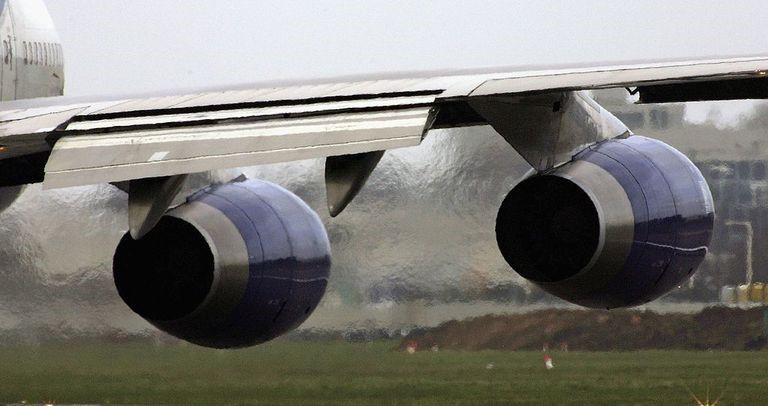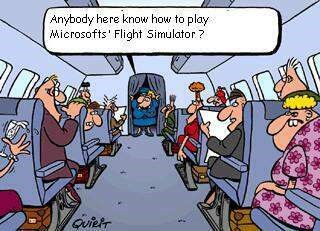|
|
||
|
||
|
Privacy Policy | Editorial Policy | Profit Policy | Join the Association | List of Members | Contact us | Index | Links |
||
|
Back Go to page: 1 2 3 4 5 6 7 8 9 10 11 12 13 14 15 16 17 18 19 20 Forward
|
||
|
|
||
|
Pedro’s Patter.
Excerpt from Jeff’s book – Wallaby Airlines.
Flying with a Jinx. October – November 1966.
Early one Monday morning I set out on a 406 mission with Stu Spinks
(left). It was our first trip together. Fifteen miles out of Saigon, the
Wallaby lurched. There was a sudden loss of power on the left engine. I
could see by the left manifold a
‘Call the Tower, tell them about the situation, and request a straight in approach on runway 25’, I told Stu. ‘Saigon Tower, Wallaby Zero One, five miles south-east with a partial engine failure, request straight in appoach runway 25’, he transmitted. The Tower gave us a priority approach. We joined finals for runway 25 and got a clearance to land. On touchdown the left engine quit as I closed the throttles and soon after all left engine fire warning lights came on. Smoke poured from the engine cowl. The drama was heightened by two airport fire engines, which I could see out of the corners of my eyes, keeping pace with us down the runway. I was conscious also of crew chief Alex Martini’s anxious face in the doorway behind us.
A twin-rotor chopper dangling an outsize fire extinguisher bottle hovered overhead, responding to our earlier emergency call. These choppers were operational on major bases for rescue and firefighting purposes. The chopper crewman would be watching us closely for signs of an out of control fire, ready to trigger the bottle and cover us with fire-smothering foam. I shut the left engine down and pulled the fire extinguisher handle. By this time, we were in the final stages of the landing run, and turning off the runway onto a high-speed taxiway. I pulled up and looked out the side window. The smoke had stopped and the fire warning lights were out. Stu looked across, relief on his face. I exhaled slowly. ‘Have a good look at the engine’, I called to Alex, ‘and don’t let those cowboys cover us with foam’, I continued, jerking a thumb towards the fire trucks parked beside us, beacons flashing.
As I looked back towards the failed engine, I noticed a USAF F-4 fighter taking off on the runway we had just vacated. Unfortunately, Stu, with fires and gasoline still on his mind, could not see it. So when it cut in its afterburner with an earshattering crump directly behind us, he lifted about a foot off his seat, thinking his last moments had arrived. Meanwhile Alex had jumped back on board. ‘No problem now boss’, he reported, ‘I’ll have a good look back at the ramp’. We taxied clear of the high-speed taxiway and headed for Rebel Ramp using the remaining engine.
Alex borrowed an engine stand and had the cowls up in no time. His close inspection of the failed engine revealed that the inlet manifold hose to the number 6 cylinder had vibrated loose, allowing raw fuel to pour into the engine bay. During flight, with a flow of air through the engine, most of this fuel was carried away in the slipstream, and the engine ran after a fashion. But on landing, as the slipstream decreased, the raw fuel ignited on hot engine components, causing the fire. Fortunately, the fire did not burn long enough to cause much damage, or present any real danger. A few seconds more though, and it might have been a different story. As Stu put it in his inimitable style: ‘I thought we were up shit creek there for a while’.
I phoned the squadron from TMC to report the details. Blue McDonnell
(below right) answered the call, telling me he would send a replacement
aircraft over from Vung Tau, and we were to continue on the 406 with
that aircraft. Sounded good to me. Blue himself arrived an hour later
with Brian Young. We
The following Friday, Stu and I were rostered together again. It had been raining heavily during the night and there was water everywhere inside the aircraft, even in the vinyl lining on the ceiling of the cargo compartment, making it sag down like a beer drinker’s pot belly. After cleaning all the water out, we turned on the power prior to start up. Both engine fire warning lights immediately came on. Of course, we were not on fire this time, since the engines were stationary. The rain had simply penetrated the fire warning system, shorting it out and rendering it useless. Once again, we transferred to another aircraft. This time, we got an engine going. While starting the left engine, there was a tremendous backfire. I throttled back while the mechanic outside inspected the exhaust augmentor tubes for damage. He gave us the thumbs up signal, so we continued.
About five minutes out of Bien Hoa, our starting difficulties long forgotten, there was a loud ‘crack’ from somewhere outside the aircraft. It did not sound like a backfire and, still being ‘ground fire virgins’, we were prepared to believe it was a shot. We were both decidedly twitchy after Monday’s events and Stu made no facetious comment about my abbreviated circuit and landing. But when we stopped and looked over the aircraft, there were no bullet holes or any other visible damage. Next day, however, after shut down in the same aircraft at Tan Son Nhut, we found the left engine spewing masses of oil. The rocker box covers on two cylinders were warped and leaking. There was no spare aircraft for us this time. The next aircraft arriving from Vung Tau dropped spare parts and a mechanic, and we waited around while repairs were carried out. Passing time sipping coffee in the TMC building, Stu and I joked about whether the events of the past week indicated that one of us was jinxed. Since he had been copilot in the Ba To prang and I had led a charmed life up to now, we decided it must have been him. ‘I’m getting married when I get back, Pedro’, he confided, ‘I don’t need any more drama’. Fortunately, our delay did not stop us getting back in time for a farewell party in the mess that evening.
Farewell parties were peculiar affairs, the elation of the lucky few and
the envy of the remaining many combining to produce a mood of euphoric
abandon. Hence the grog flowed even more freely than usual and
conversations became more and more animated, with those being farewelled
Back inside, the conversation became a buzz, then again a racket. An hour later, the incident was totally forgotten. Much later I went up to bed. Next day, I spoke to the guard who explained that the previous night’s drama was caused by a local larrikin throwing a brick on the roof. He had fired off a couple of warning shots before he realised that we were not under attack by the VC. It was a measure of the relatively casual acceptance of weapons that no one in the bar took more than a passing interest in the incident.
Not only the guard but everyone else in the Villa was armed to the teeth. With the proliferation of guns and ammunition, most of it stored in cupboards and under people’s beds, the risk of accidental shooting might have been greater than that of being shot by the enemy. We all carried weapons everywhere on duty. Naturally, military passengers on our aircraft carried arms too. Passengers accidentally discharging loaded weapons as they made themselves comfortable before flight had caused at least a few of the bullet holes in the Wallabies! Our crew chiefs now made sure all the passengers’ weapons were cleared prior to boarding.
Some time after our engine fire incident, Stu Spinks and I were programmed to do a Nha Trang detachment together.
|
||
|
|
||
|
Apart from joking about jinxes over a beer, we had not given our joint misfortunes another thought. Both of us would have vehemently denied being superstitious. Yet the disastrous detachment which followed made us wonder whether we ought to fly together again. On our first day away, I was backing out of the crowded ramp at Nha Trang for a third and final shuttle to Song Mao. The aircraft were, as usual, parked nose to nose in double rows, with laneways between each line of aircraft tails. Noticing a vacant space to the right in the aircraft line facing us, I thought it would be easier to turn and go forward through it, rather than carry out the usual reverse turn manoeuvre. I stopped, and began to turn towards the space. Bad mistake. Looking out to get clearance on the left wingtip, my horrified gaze fell on a large, portable fire extinguisher, previously out of sight in front of the nose, but now ahead of the advancing left propeller.
Obviously Bugs Rose, the crew chief, sitting on the edge of the open cargo ramp, had not seen it either. I slammed on the brakes and shut down the engine. But it was too late. Click, clang, chop. All three blades contacted the extinguisher with increasing severity. Ugly scars appeared. A propeller change would be necessary. Crestfallen, I headed for the telephone. By the time I reached the CO via the complicated VHF phone patching system, which connected with Vung Tau via Cam Ranh Bay and Bien Hoa exchanges, my stomach felt like lead. To any pilot a taxiing accident, even under such circumstances, is considered inexcusable. Surprisingly, the CO did not chew my ear, but said he would send up a spare propeller next day. Easy solution. We were to change it ourselves and continue on detachment. No problem!
A Wallaby duly arrived next morning and left us all alone with a
replacement propeller. Bugs, ever resourceful, borrowed a make-shift
"stand" and some tools from a local USAF squadron and the rest of us
rolled up our sleeves and became his apprentices. We soon had the
damaged prop off, and manhandled
A cutting masked the first part of the strip, where the bulldozers had dug down to try to level the surface. As we entered this cutting, at the very point where the aircraft had to be flared for landing, the cross-wind suddenly disappeared. The Wallaby thumped onto the ground sideways. Fortunately, the strip widened slightly into a parking area into which we skidded in a cloud of dust. Having arrived in this undignified manner, I was only too keen to get out of the place. We were again carrying drums of POL, so I left the motors running while Bugs disappeared down the back to supervise what should have been a simple unloading. Suddenly, the aircraft lurched forward with a bone-jarring shudder. Shutting down the engines, I ran down the back, scarcely daring to look. A flat-top truck, reversing in to accept the load, had slammed into the cargo ramp before Bugs and his assistant had time to fit the rubber buffer and position wheel chocks behind the truck, our standard practice. The ramp was dented and its hydraulic jacks damaged. It could no longer be closed. Hoping to redeem myself after the fire extinguisher episode, I had ended up in a worse situation. The driver mumbled apologies, claiming the truck had no brakes. Bugs had a different story. He had heard talk of a drinking binge the previous night, and smelt liquor on the driver’s breath. However, even though I felt like assaulting the driver, he belonged to someone else’s outfit. Making a scene would not change anything.
We pushed the remaining drums out onto the ground and, demoralised and dispirited, I headed back to Pleiku and the VHF telephone to tell the CO we were coming home. We flew direct to Vung Tau with the ramp down, bypassing Nha Trang. When I got back, I went straight to the CO’s office to get whatever was coming over with. He must have realised how I felt after this series of disasters, since he commiserated with, rather than admonished me. I was duly awarded ‘penance’ of a fortnight’s duty as copilot only for the fire extinguisher incident, which was considered my responsibility. I accepted this with relief. But I could not help wondering about the ‘jinx’.
|
||
|
Some day you will miss today.
|
||
|
Melbourne-Sydney now world's second
busiest flight route.
Two of the busiest air routes in the world are found in Australia. According to flight data website OAG.com, Sydney to Melbourne is the world's second busiest air route, with 54,519 flights a year. And Brisbane to Sydney is the eighth busiest in the world, flying 33,765 times a year.
The world's busiest air route is in South Korea, from the holiday island of Jeju to the capital of Seoul. Airlines fly the route a whopping 64,991 times a year.
While most of the top 10 list was filled with Asian destinations such as Mumbai to Delhi at third busiest (47,462), the busiest US route was LA to San Francisco at number seven with 34,897 flights. The 10th busiest was Cape Town to Johannesburg in South Africa, with 31,914 flights.
All of the top 10 busiest routes were domestic.
|
||
|
|
||
|
Aircraft at Sydney Airport. There are now 54,519 flights between Sydney and Melbourne's airports annually.
|
||
|
When it came to international routes, Hong Kong to Taipei topped the list with 29,494 flights a year. Kuala Lumpur to Singapore is the second busiest (29,383 flights), and Jakarta to Singapore at third, (26,872 flights).
Of the top ten, eight routes were Asian. The busiest route outside of Asia is New York to Toronto, the sixth busiest with 17,116 flights a year, followed by Dublin to London, the ninth busiest route in the world (14,556 flights).
Meanwhile, the statistics for the Sydney - Melbourne corridor could add leverage to the argument that Australia needs a high-speed rail network, taking pressure and driving traffic away from its two biggest airports. A high speed train could potentially travel from Melbourne to Sydney in a fraction over three hours, or two hours and 45 minutes express. One study found a train, which would travel at 350 km/hr, was last projected to cost $112 billion.
That statistics come after 2017 was confirmed as the safest year on record for commercial air travel, with zero accident deaths recorded for commercial passenger jets. There were just 44 deaths in 2017, equalling one fatal accident for every 7.36 million departures.
World's 10 busiest air routes:
1. Jeju-Seoul, South Korea: 64,991 2. Melbourne-Sydney, Australia: 54,519 3. Mumbai-Delhi, India: 47,462 4. Fukuoka-Tokyo Haneda, Japan: 42,835 5. Rio de Janeiro-Sao Paulo Congonhas, Brazil: 39,325 6. Sapporo-Tokyo, Japan: 38,389 7. Los Angeles-San Francisco, USA: 34,897 8. Brisbane-Sydney, Australia: 33,765 9. Cape Town-Johannesburg, South Africa: 31,914 10. Beijing-Shanghai, China: 30,029
World's busiest international air routes:
1. Hong Kong-Taipei: 29,494 2. Kuala Lumpur-Singapore: 29,383 3. Jakarta-Singapore: 26,872 4. Jakarta-Kuala Lumpur: 20,890 5. Hong Kong-Shanghai: 20,818 6. New York La Guardia-Toronto: 17,116 7. Hong Kong-Seoul Incheon: 16,366 8. Beijing-Hong Kong: 14,592 9. Dublin-London Heathrow: 14,556 10. Bangkok-Singapore: 14,455
|
||
|
Things that are hard to say are usually the most important
An RAAF fighter-pilot who became Prime Minister.
John Gorton had a distinguished war record; his craggy looks were partly the result of a crash when his aircraft was shot down in 1942.
John Gorton was 29, married, and had completed an MA at Oxford when he joined the RAAF in late 1940. He trained as a pilot and served in Britain before being posted to Singapore with No. 232 Squadron RAF. On 21 January 1942, flying a Hawker Hurricane which had only been unloaded a week earlier, he was shot down by a Japanese fighter. He crash-landed and was thrown heavily into his instrument panel, causing severe facial injuries.
Just two days before the surrender of Singapore Gorton was evacuated on the transport Derrymore, but his problems were far from over; the ship was torpedoed and he only survived after being rescued by the corvette HMAS Ballarat. Later that year, once healed, he was posted to No. 77 Squadron RAAF, flying Kittyhawks. On 7 September, operating out of Darwin, he had to make a forced landing. It was days before he and the aircraft were recovered.
Flying Officer Gorton (arrow) among survivors of the Derrymore being taken on board HMAS Ballarat in February 1942.
Entering politics after the war, Gorton was elected as a Liberal Party senator in 1949 and became a minister in 1958. When Prime Minister Harold Holt drowned in 1967 Gorton was selected to take his place. He was a controversial and progressive leader: “A knockabout bloke with the larrikin streak, his scarred features and crumpled suits, his candid approach and laconic air, jaunty grin, tousled hair and ever-present cigarette.” For the Prime Minister, it was a politically tumultuous time, not the least because of growing opposition to the Vietnam War. But his strongest critics seemed to have been in his own party.
He was replaced as leader in 1971 after casting the deciding vote against himself. In 1975 he quit politics. It was only in retirement during his later years that he was recognised as a party elder.
|
||
|
|
||
|
Flying Officer Gorton (back row, 4th from left) with other pilots of No. 77 Squadron RAAF in the Northern Territory in January 1943.
|
||
|
Things are just things – don’t get too attached to them
|
||
|
|
||
|
|
||
|
Prime Minister John Gorton visits troops at Nui Dat, South Vietnam, in June 1968.
|
||
|
||
|
|
||
|
Air Safety.
Below are two US Air Force Educational Documentaries, somewhat dated. The 1st involves a B52 losing its tail fin in flight and the subsequent landing, amazing flying
|
||
|
|
||
|
The 2nd involves the emergency landing of a B58 Hustller bomber – again great planning for the subsequent landing at Edwards but they kept the aircraft flying through the night with many inflight re-fuels.
|
||
|
|
||
|
|
||
|
The F-35
Won’t be long before there’s a bunch of these flying out of Willytown. There’s been a lot of blatantly ignorant nay-sayers sprouting everything bad they can think of about this aircraft but the proof will be in the pudding. Eventually those pessimists will be seen as the ignorant fools they really are.
Here’s a Lockheed Martin video on the aircraft, admittedly it’s a promo film but it’s worth watching.
|
||
|
|
||
|
And here's another one:
|
||
|
|
||
|
Non-stop Sydney, Melbourne to London Qantas flights: Airbus pitches A350-900ULR |
||
|
|
||
|
In August 2017, Qantas publicly challenged Airbus and its US rival Boeing to boost the range of the A350 and 777X models to allow it to complete "the last frontier" of commercial flying by 2022.
Airbus's talks with Qantas about a plane that can fly 20 hours non-stop from Sydney to London are centred around the A350-900ULR rather than reviving a shorter A350 variant. Singapore Airlines has ordered the Airbus A350-900ULR in order to resume non-stop flights from Singapore to New York.
A non-stop Sydney-London route that is three hours shorter than current flights involving stops would allow Qantas to charge a premium and differentiate its product from the around two dozen other airlines plying the so-called Kangaroo route with stop-offs in Singapore, Dubai and Hong Kong.
In a speech to the Royal Aeronautical Society in London on Monday, GM Alan Joyce said both manufacturers had reacted positively, but the ability to fly the aircraft with a full commercial load remained a stretch. Qantas has said 300 seats would be ideal to give it the highest possible revenue and fleet flexibility.
Joyce said: "The aircraft can do it today, both the 777 and the A350, but we believe it can't do it with full payload. We do believe that more work is needed on both aircraft to get it there."
Tiny Toilets.
Anyone who has been on an aircraft for more than 2 hours has most likely used the onboard toilet at least once. Once the coffee kicks in you’re committed and down the back you go. But! As everyone knows, as aircraft modernise, toilets shrink, in fact they are so small on a lot of aircraft that if you’re serious you virtually have to open the door, duck your head and back in.
Boeing has recently released its new 737 MAX aircraft and by all accounts they’ve taken small toiles to a new degree.
Boeing's new 737 MAX, launched last year amid much fanfare, has been hailed as an aviation "game changer". Quieter and more efficient than its popular predecessor (the simple 737), it's billed as the short-haul plane of the future.
|
||
|
|
||
|
There's just one issue. The toilets are now ludicrously small – with
sinks so tiny that passengers can only wash one hand at a time. That's
according to flight attendants at American Airlines, who recently met
with senior management to outline their grievances about the new
aircraft's WCs. The cabin
Stewardesses pose in the economy cabin of SilkAir's new Boeing 737 Max 8 aircraft.
American Airlines has so far received just four 737 MAXs but the model is set to become a lynchpin in its fleet. It will welcome another 20 by the end of 2018, and 20 more each year for the next four years. Indeed, the 737 MAX is flying off the shelves.
Boeing has received 4,306 orders from airlines around the world, including - most notably for European traveller - Ryanair, which will receive the first of 110 early next year.
But why are the loos so small?
The 737-800 has a maximum capacity of 189. But its replacement, the 737 MAX 8, used by American Airlines, is certified to carry up to 210 pax. How has Boeing found room for 21 more seats? Installing smaller toilets at the back of the plane is how and cutting the size of the kitchen galley. As have new slimline "Zodiac" seats.
American's planes actually carry far fewer than 210 because it uses a three-class seating configuration (126 in economy, 30 in "cabin extra", and 16 in first class). But in the rear of the cabin space is still scarce. Twenty-one more seats? That must mean less legroom? A sensible conclusion, and in American's case the correct one. Its 737-800s offer 31 inches of "pitch" (the distance from one row of seats to the next) in economy class. On the new 737 MAX 8, that's been trimmed to 30. But it could have been worse. Some airlines are opting for as little as 29 inches of pitch on their 737 MAXs.
Why Planes are Slower than they used to be.
While we all love to complain about air travel, there's one annoyance few travellers even notice: Flying isn't getting faster. In fact, cross-country flights were a little quicker 50 years ago because airlines included less scheduled time for inevitable delays.
|
||
|
|
||
|
We're used to the idea that 50 years is an eternity is technological innovation. So why aren't we flying faster than we did in 1967, before humans landed on the moon? This video below tackles a number of curious developments that led to this speed stagnation.
|
||
|
For one thing, airliners' turbofan engines are most efficient in the 400-600 mph range where these planes typically fly. To go any faster—faster than the speed of sound—you'd need a proper jet engine like the Concorde had. But that remarkable plane used an incredible amount of fuel compared to a boring old 737, and it's not around anymore.
There are some interesting details in here about the physics of flight, too. It's actually dangerous for planes to fly right around the speed of sound, for example, which is why airlines wouldn't fly much faster than 600 mph even if it were fuel-efficient to do so. And there's just not enough consumer demand for faster flight to meet the huge costs that'd be required to go much faster.
|
||
|
|
||
|
|
||
|
|
||
|
|
||
|
|
||
|
|
||
|
|
||
|
Back Go to page: 1 2 3 4 5 6 7 8 9 10 11 12 13 14 15 16 17 18 19 20 Forward |
||
|
|

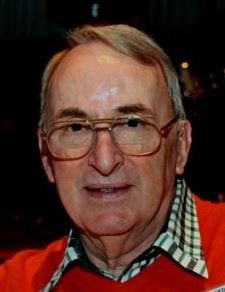
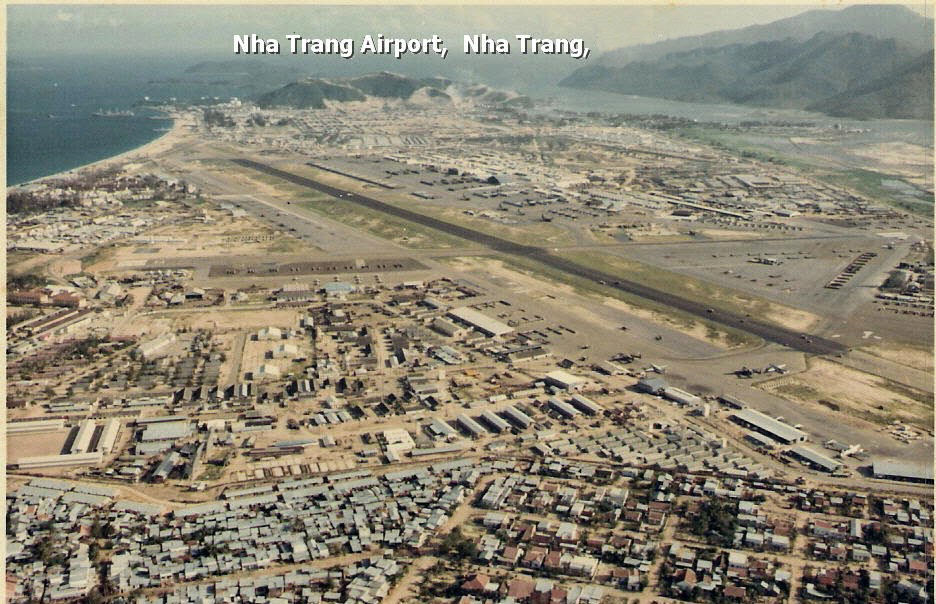
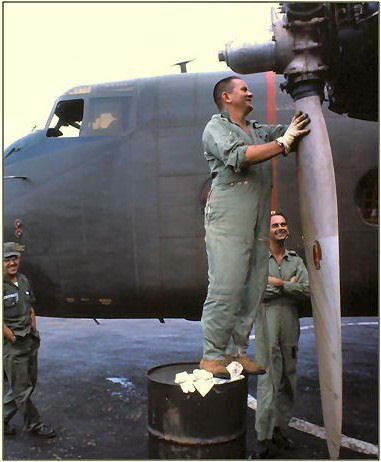 the new one into position. By mid-afternoon, we had the engine running
again. Encouraged, I called up a load from TMC so that we could start
again first thing in the morning and make up for lost time. After a run
to Song Mao, TMC sent us up to Pleiku for the day. We were given a load
for Dak Seang, the new Special Forces camp south of Dak Pek. My two
previous visits there on detachment with the CO had not impressed me,
especially after being conned into a landing while the strip was still
under construction. The casual attitude of the advisory team had not
endeared me to the place either. Now I was here again with Stu Spinks,
wondering if the runway was any better. According to TMC this would be
only the second time a fixed-wing aircraft had landed here. Determined
not to be caught out again I made a low approach, confirming that the
strip was indeed finished. Not that the subsequent earthworks had
improved things much. Fourteen hundred feet from end to end, the first
three hundred feet of one end was so steeply sloping that it was
unusable. On finals, there was a roaring cross-wind, to be expected
since the wind blew straight down the valley from Dak Pek and over the
hilltop camp site at right angles to the strip.
the new one into position. By mid-afternoon, we had the engine running
again. Encouraged, I called up a load from TMC so that we could start
again first thing in the morning and make up for lost time. After a run
to Song Mao, TMC sent us up to Pleiku for the day. We were given a load
for Dak Seang, the new Special Forces camp south of Dak Pek. My two
previous visits there on detachment with the CO had not impressed me,
especially after being conned into a landing while the strip was still
under construction. The casual attitude of the advisory team had not
endeared me to the place either. Now I was here again with Stu Spinks,
wondering if the runway was any better. According to TMC this would be
only the second time a fixed-wing aircraft had landed here. Determined
not to be caught out again I made a low approach, confirming that the
strip was indeed finished. Not that the subsequent earthworks had
improved things much. Fourteen hundred feet from end to end, the first
three hundred feet of one end was so steeply sloping that it was
unusable. On finals, there was a roaring cross-wind, to be expected
since the wind blew straight down the valley from Dak Pek and over the
hilltop camp site at right angles to the strip. 
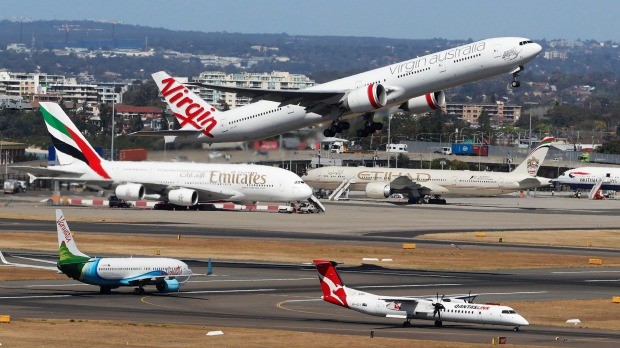
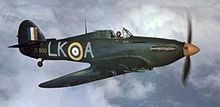
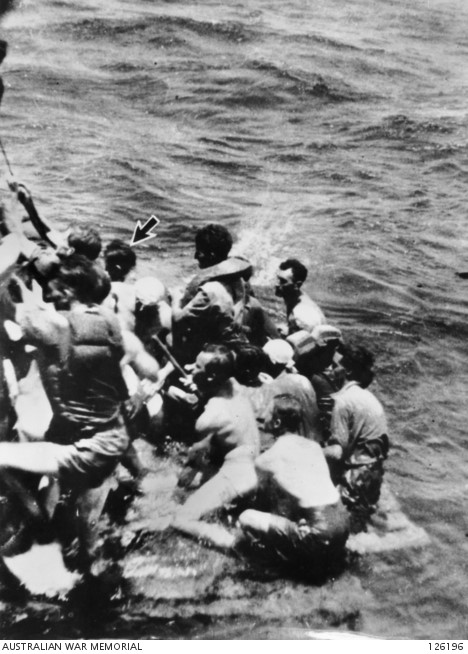 Gorton
took part in No. 77 Squadron’s operations against the Japanese out of
Milne Bay. In March 1943 he was involved in a serious accident when his
aircraft crashed during take-off. He was returned to Australia after
which he become a flying instructor. He was discharged in December 1944.
Gorton
took part in No. 77 Squadron’s operations against the Japanese out of
Milne Bay. In March 1943 he was involved in a serious accident when his
aircraft crashed during take-off. He was returned to Australia after
which he become a flying instructor. He was discharged in December 1944.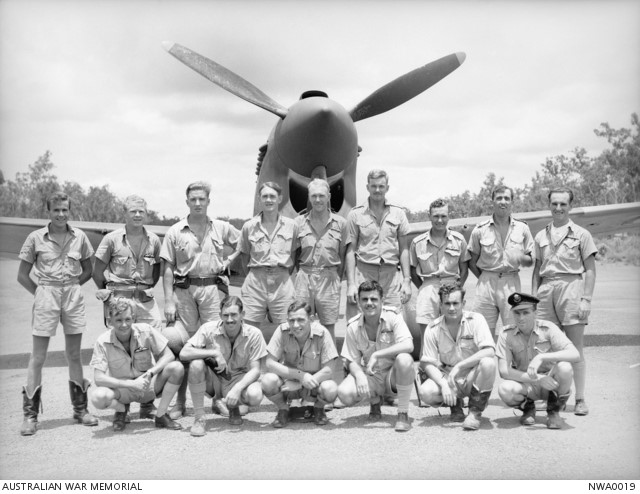
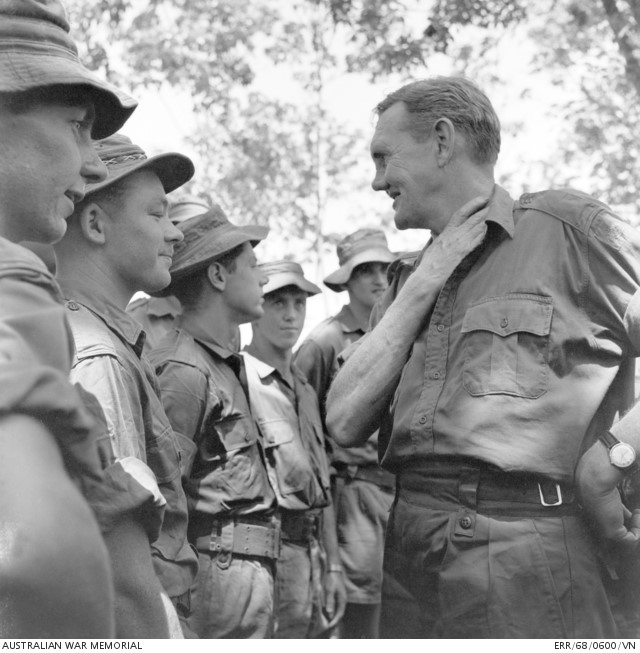
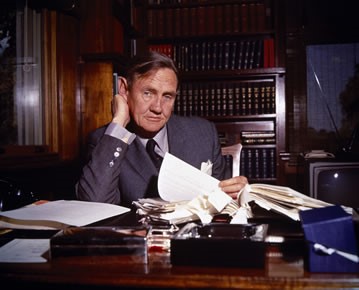
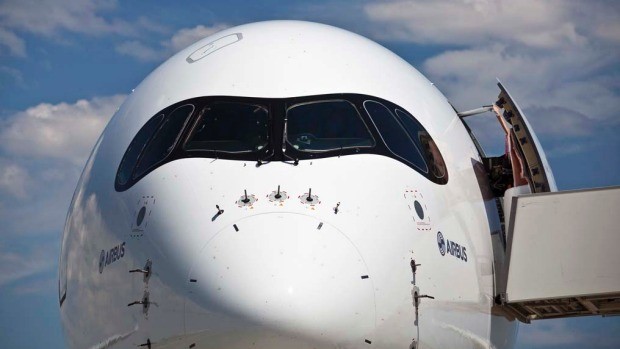
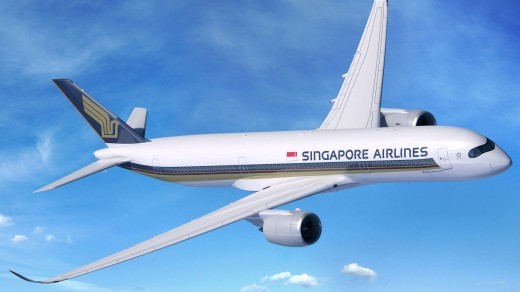
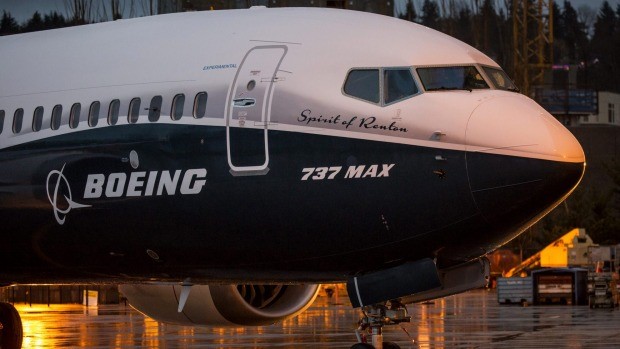
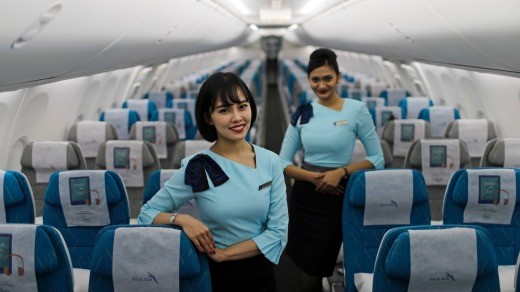 crew
say those attempting to use the undersized sinks risk having their
clothes doused with water, while the rear of the aircraft is said to be
so cramped that when the doors of the two back end loos are opened,
cabin crew are sealed off in the gallery and unable to reach passengers.
crew
say those attempting to use the undersized sinks risk having their
clothes doused with water, while the rear of the aircraft is said to be
so cramped that when the doors of the two back end loos are opened,
cabin crew are sealed off in the gallery and unable to reach passengers.
